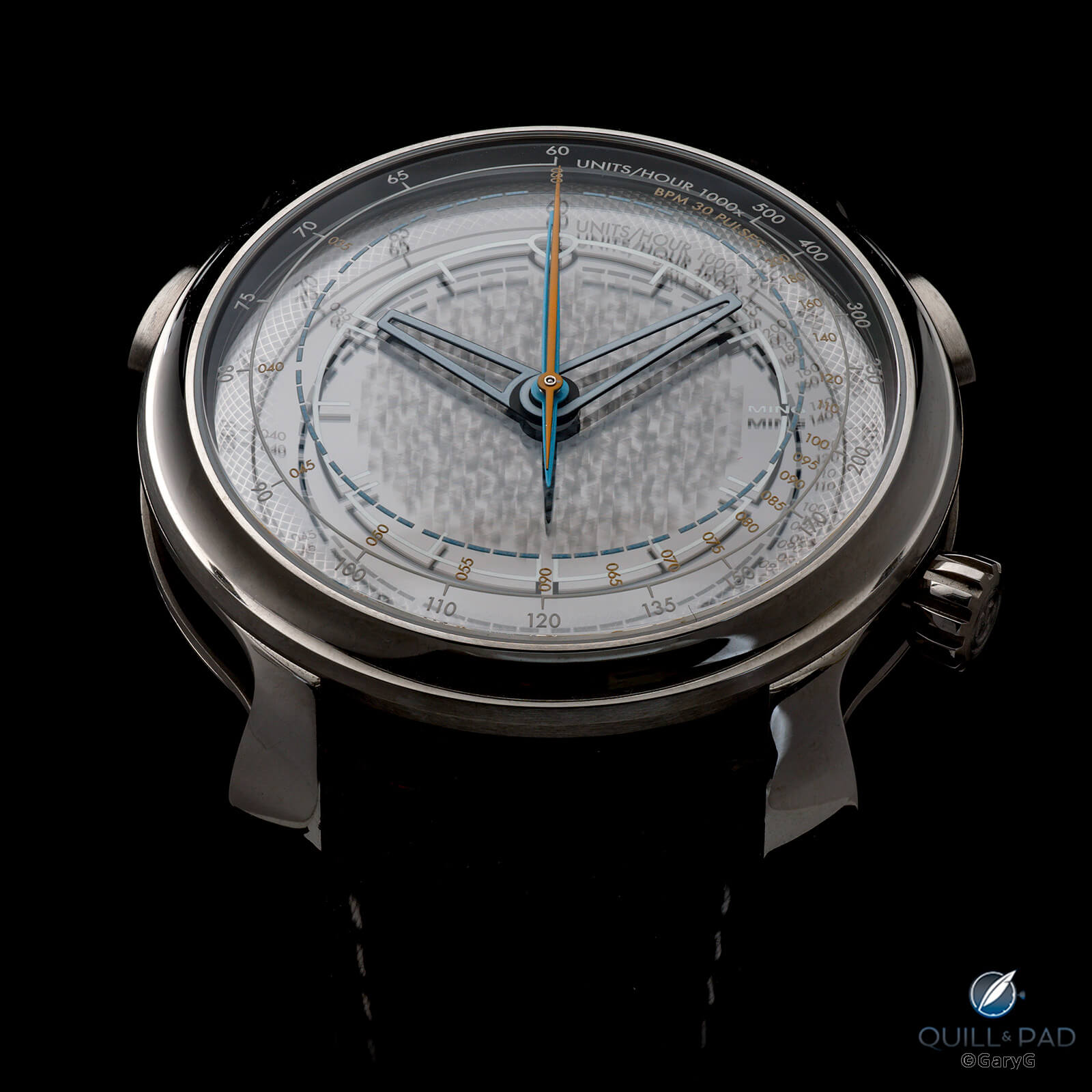————————————————————————————————
Why it’s cool
While simplified a bit from the original Mosaic 20.01, the dial side of the Series 2 is still a remarkable achievement.

Low angle view, Ming Model 20.01
If you look closely at the photo above, you can pick out several layers. The base is a titanium plate with a modified Clous-de-Paris finish; above that is a sapphire layer with a gradient finish that reveals the Clous-de-Paris and then darkens gradually to black behind the index markings; and above that is a 1.1mm thick sapphire layer with the three-tiered mosaic of etched triangles and the hour ring.
Hovering above it all are the chronograph, pulsometer, and tachymeter scales on the underside of the crystal. And while you’re looking, check out the bend on that orange chrono seconds hand!
The straight-on view also gives an impressive sense of depth, with the multi-layer triangular mosaic adding visual pop.

Dial detail, Ming Model 20.01 Series 2
As with pretty much all Ming watches, though, the fun is just beginning with views of the watch in direct light. When seen at different angles and with varied incident light, the multiple layers provide a look that goes from vivid, high-contrast blackness to smoky to mirror-like, as in the photo below.

Getting interesting: Ming Model 20.01 in shallow incident light
One of the first exercises Thein had me perform as a student was to shoot a single watch with multiple light positions – an exercise I heartily recommend to anyone who is learning to photograph watches.
For fun, I replicated the experiment with the 20.01: same watch, same camera position, with a single flash in two different positions.

Light experiment: Model 20.01 Series 2 in varied light
And then, just because I could, I took a third photo from a different setup, flipped it horizontally, and added it on the left end to yield a trifecta of perspectives.

One watch, three views: Ming Model 20.01
————————————————————————————————






